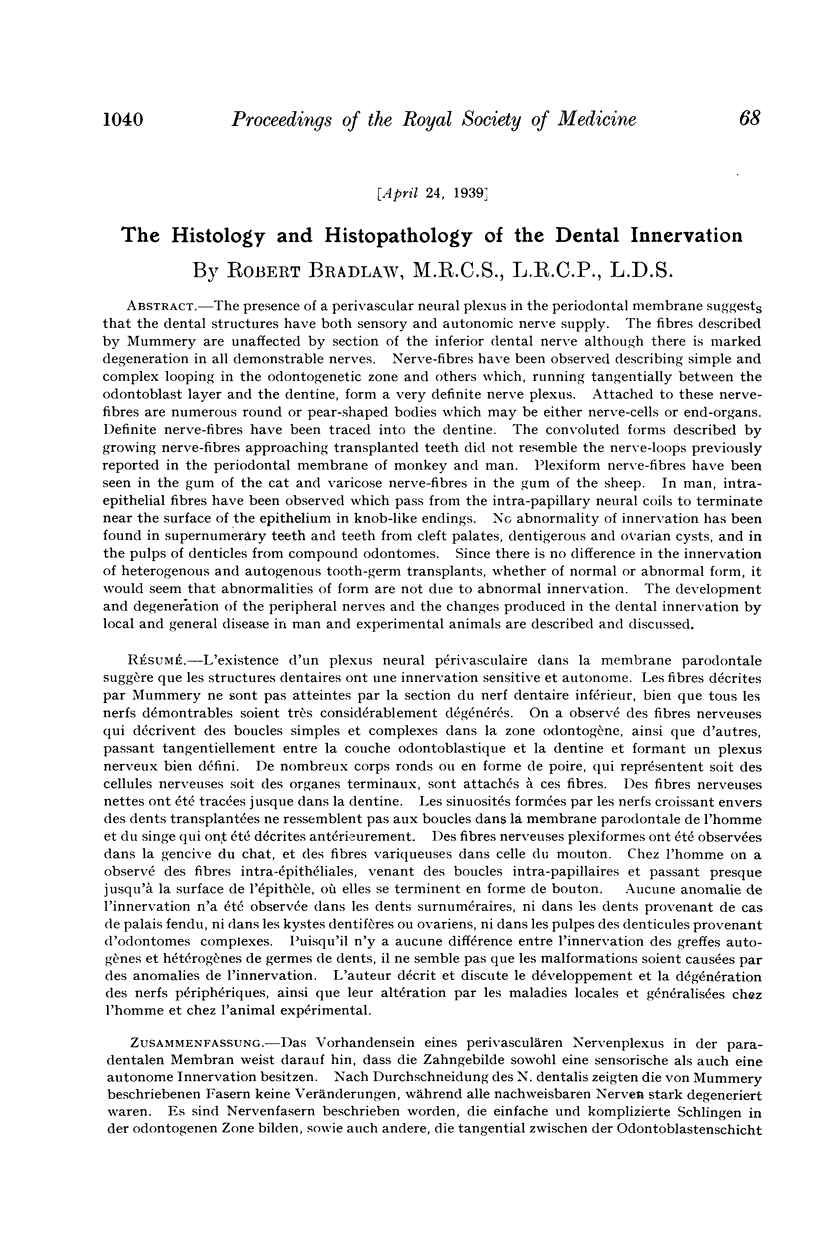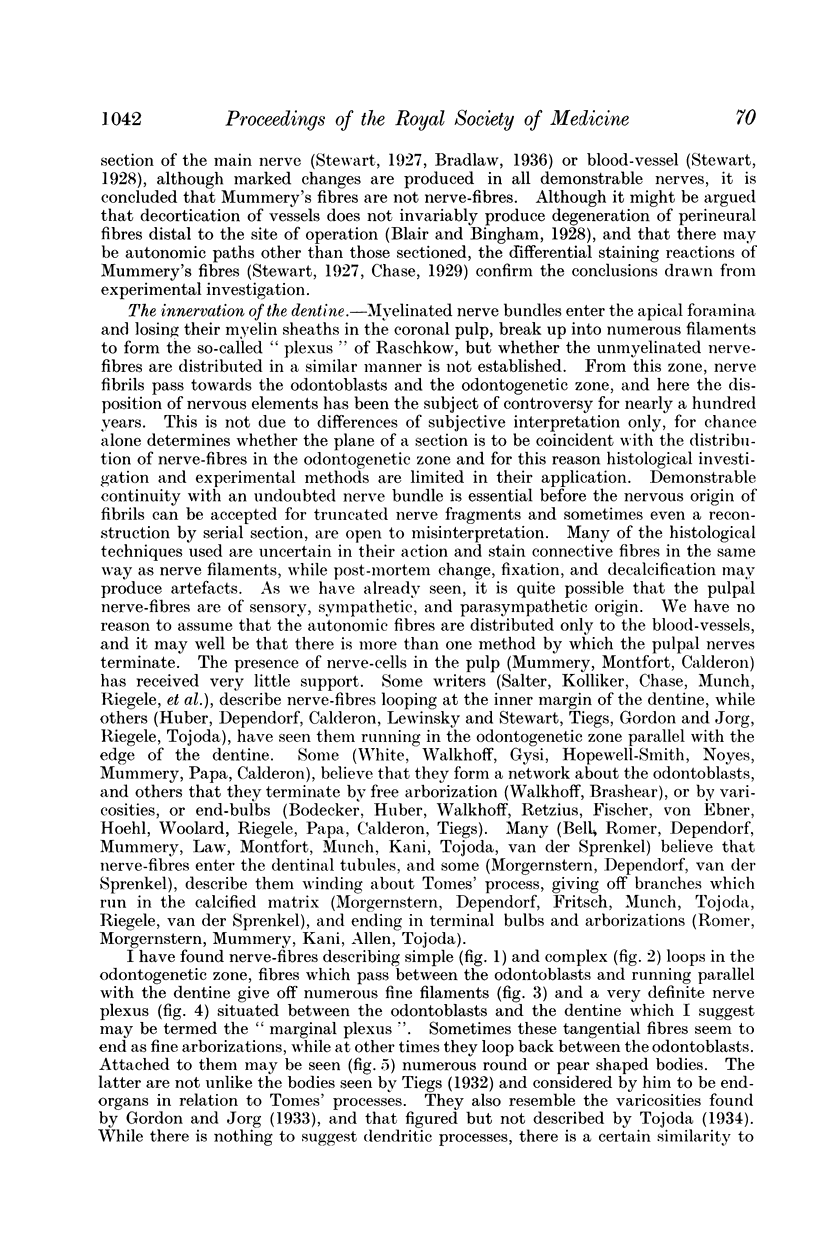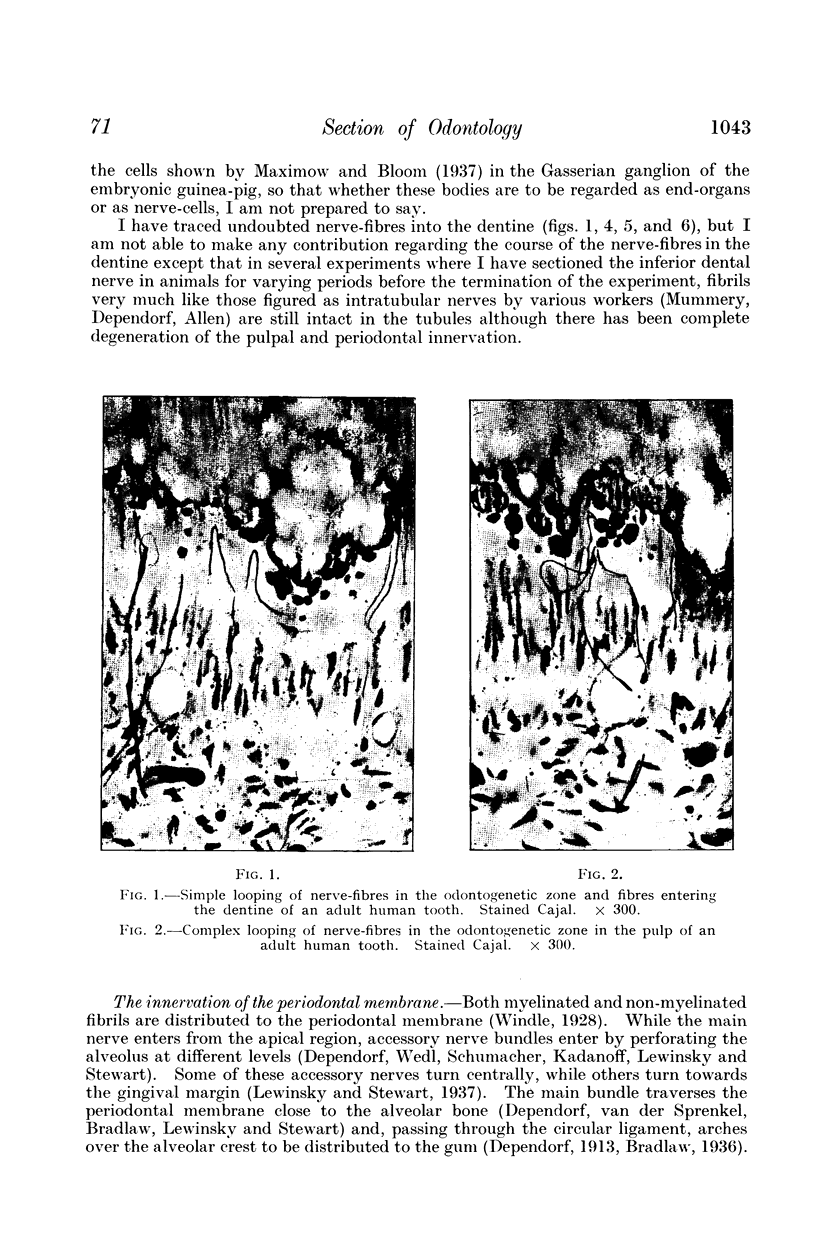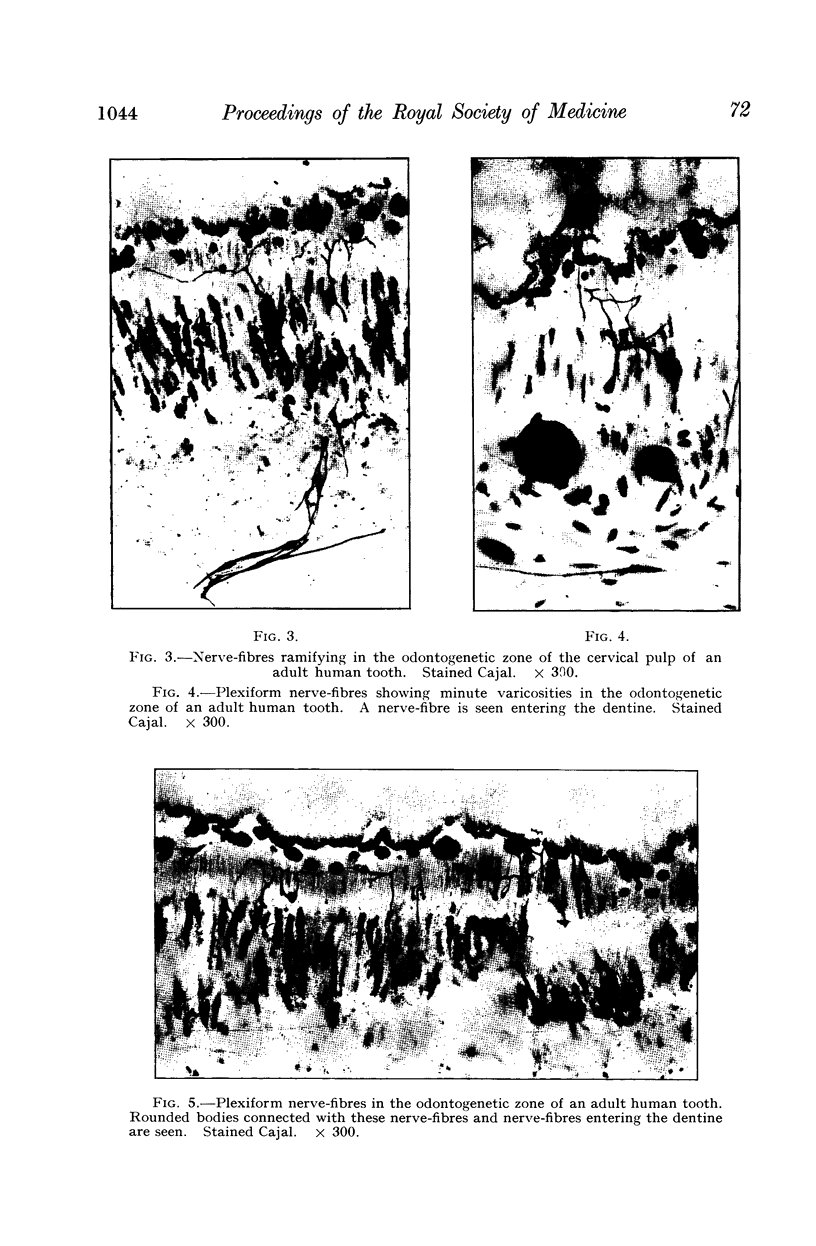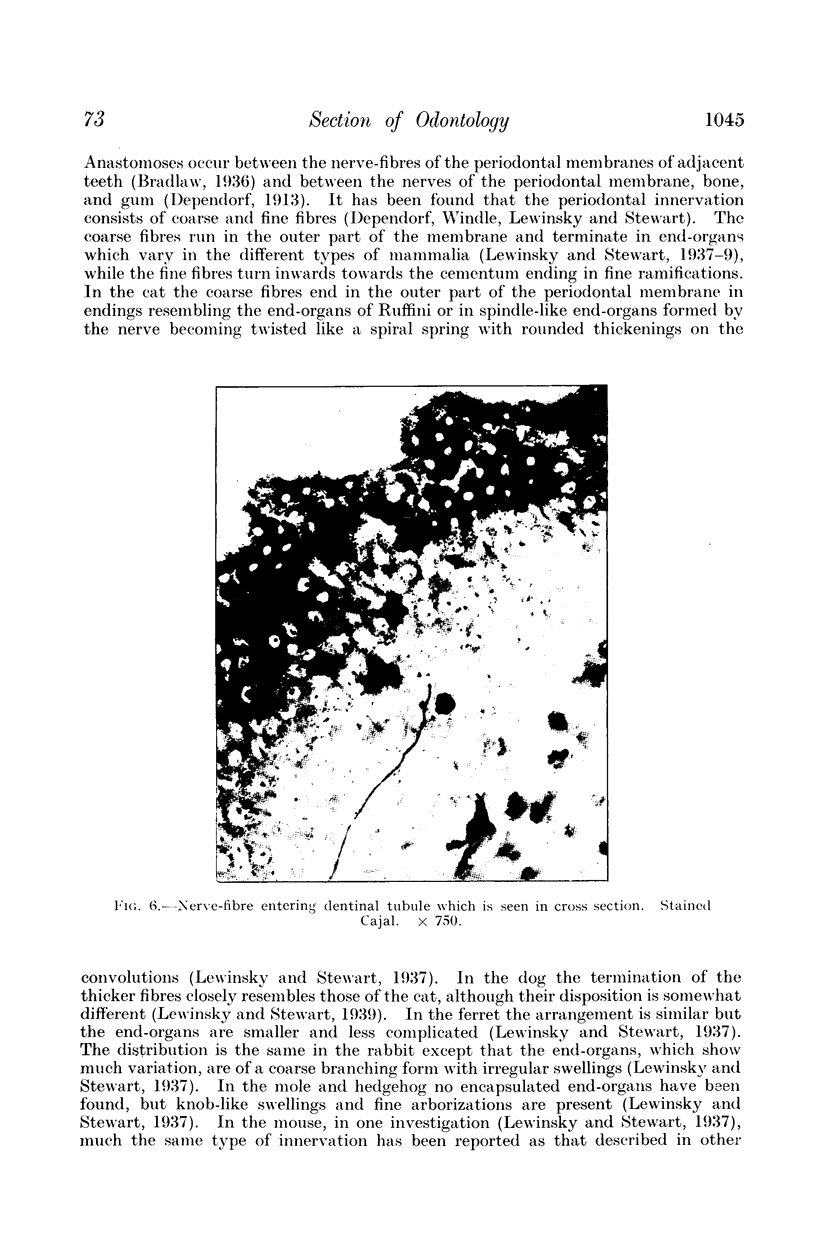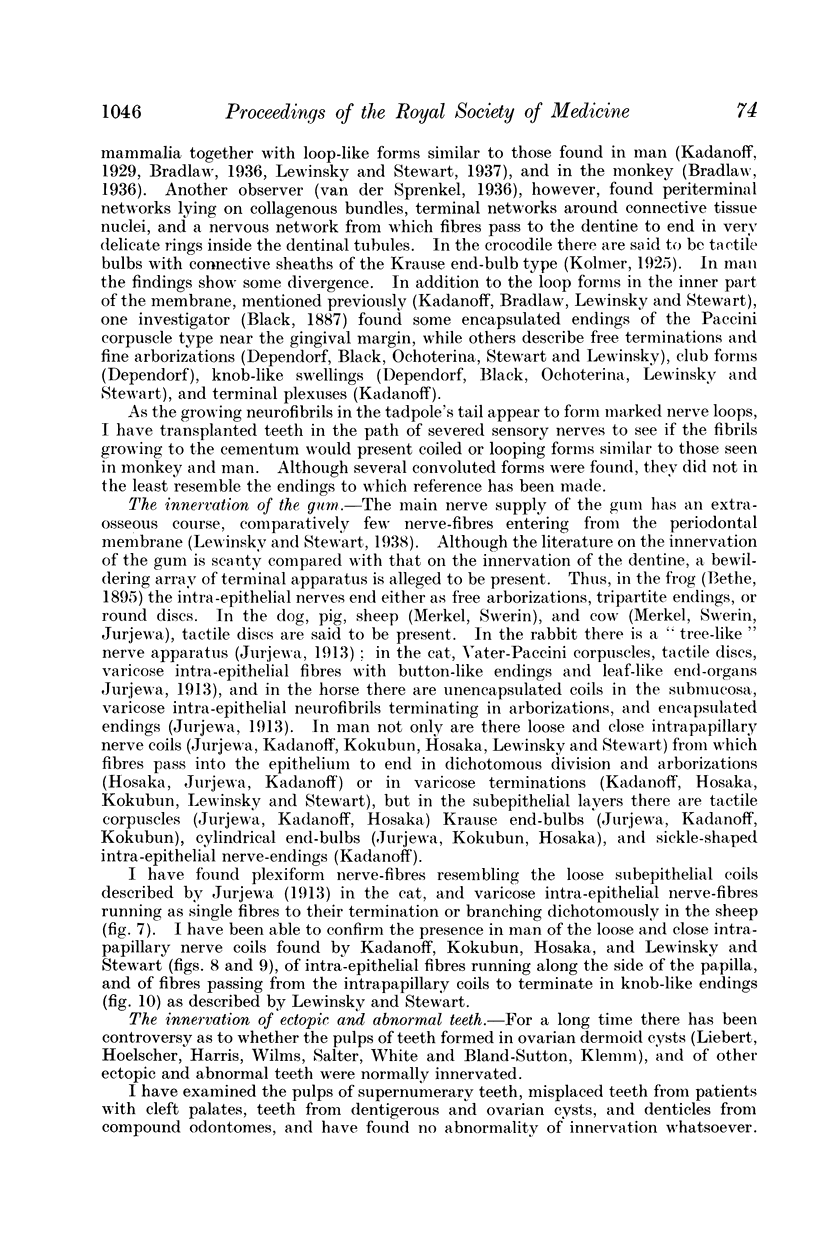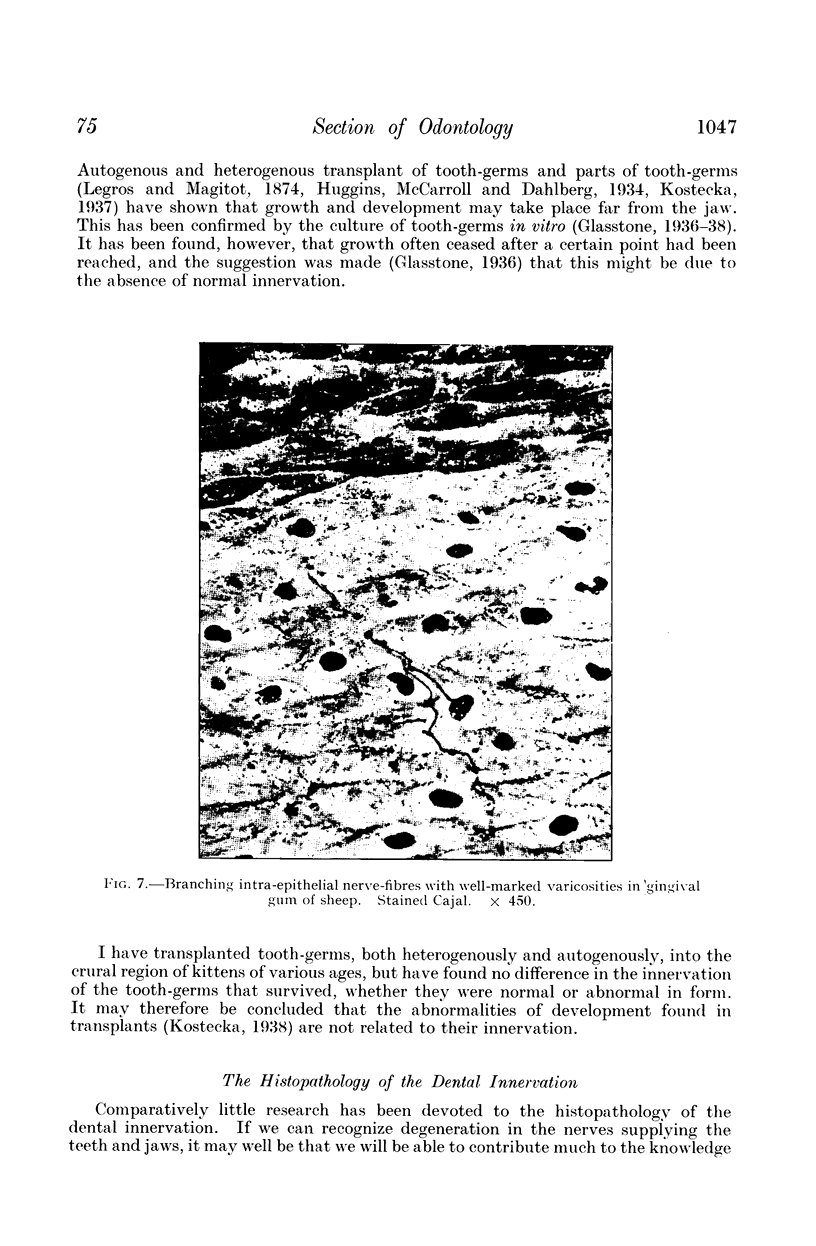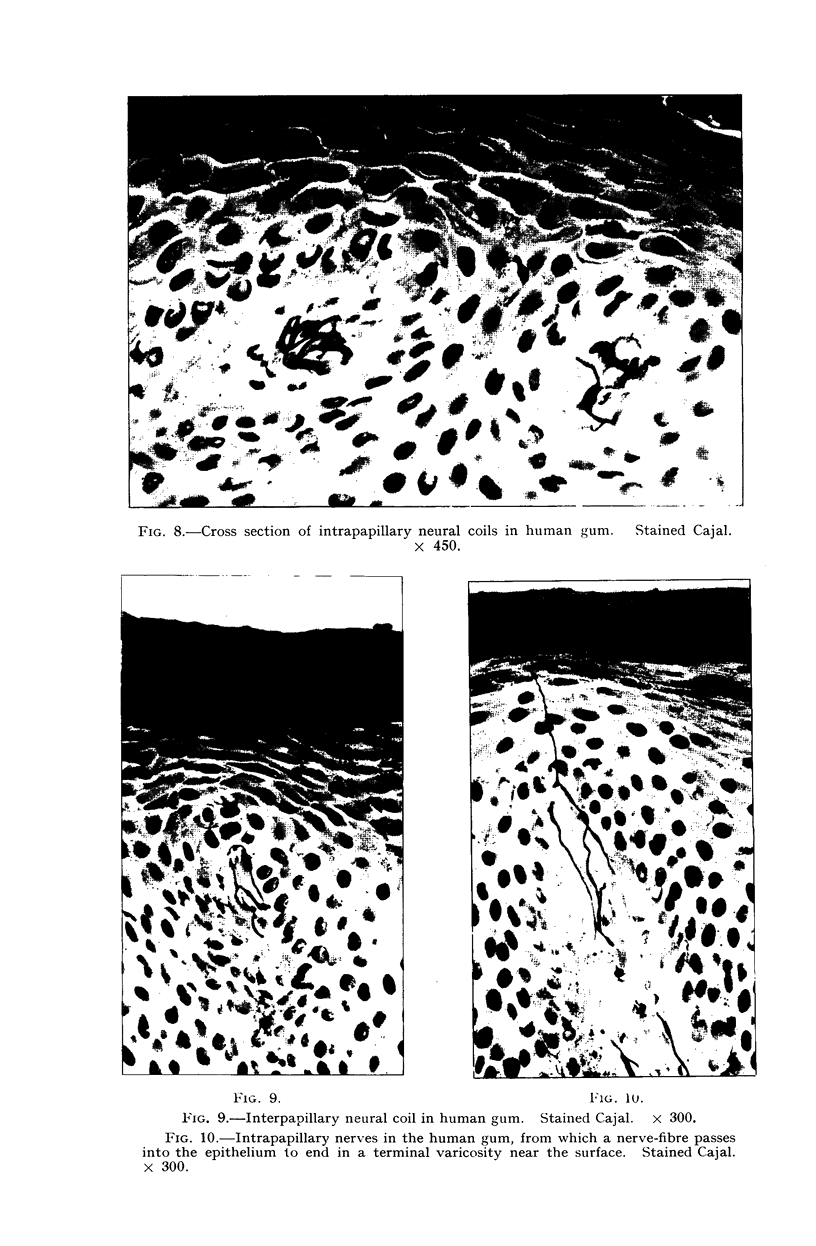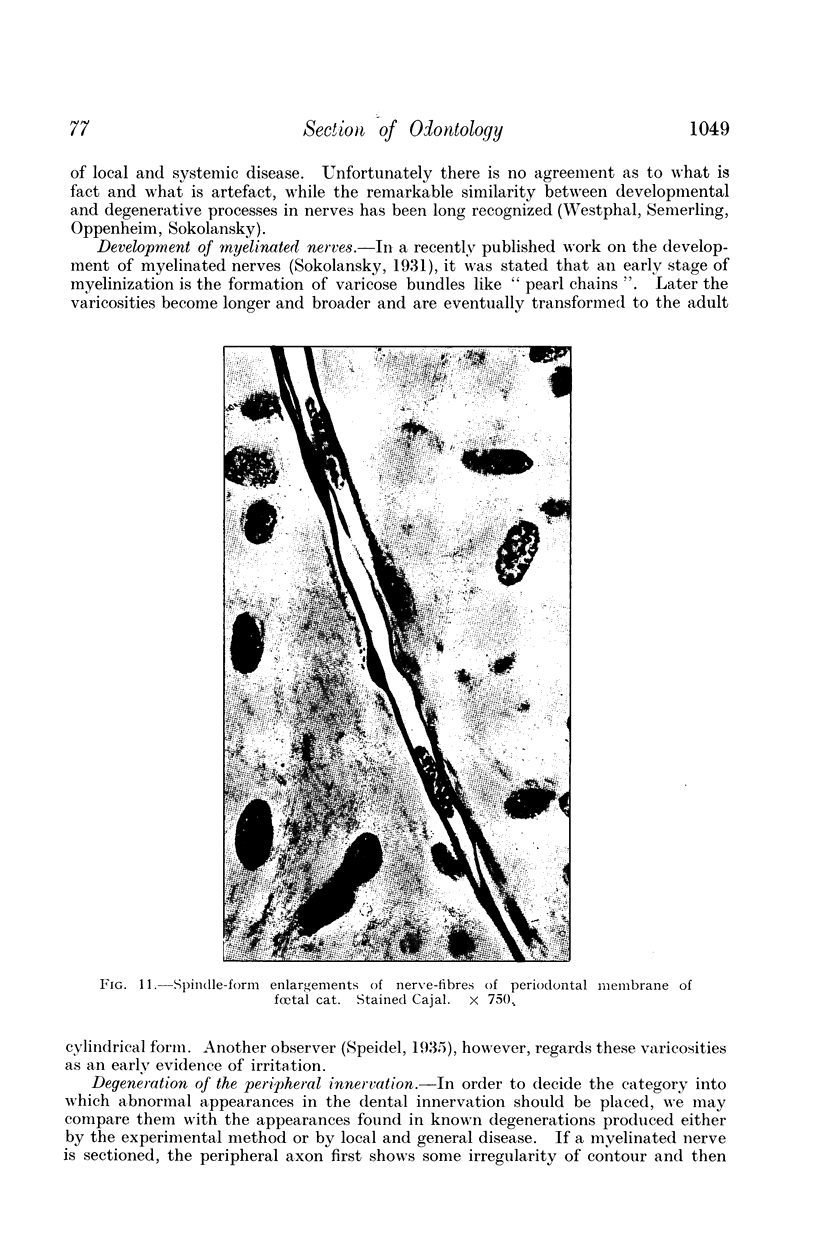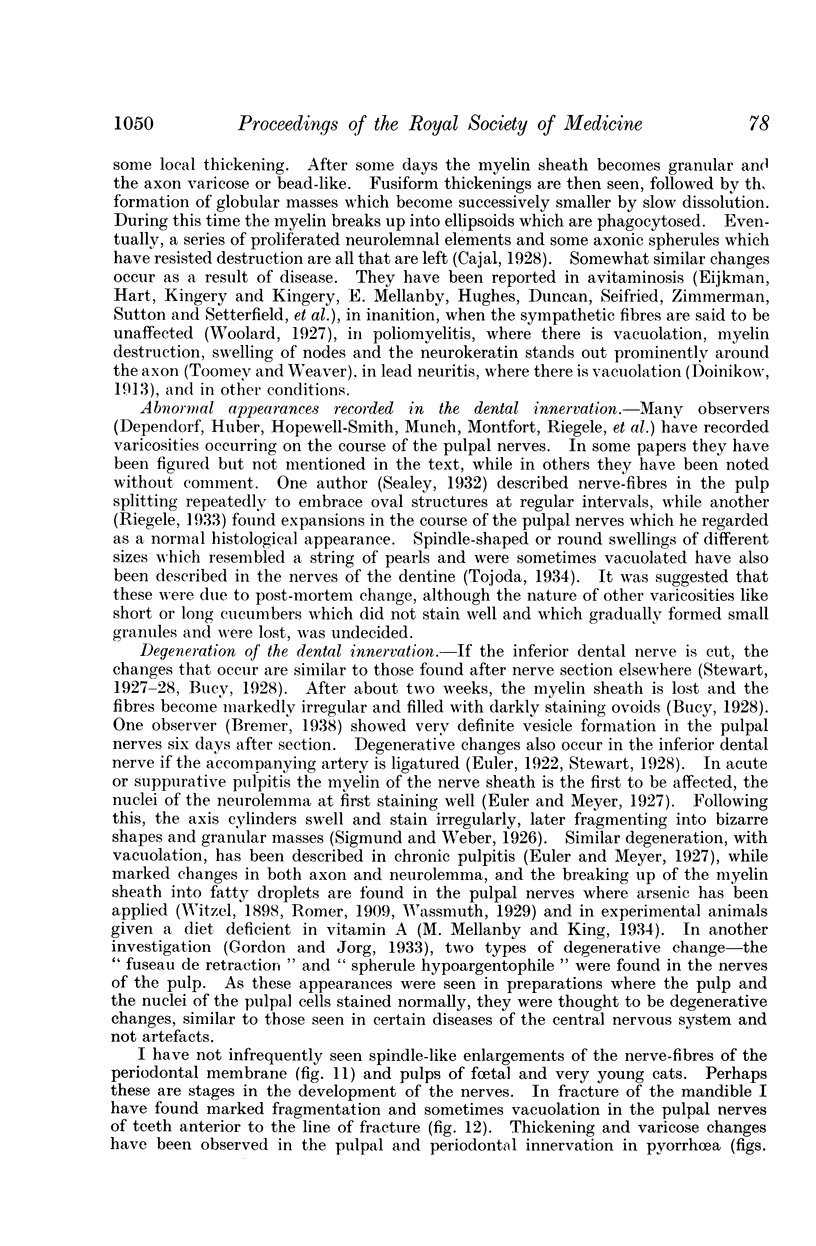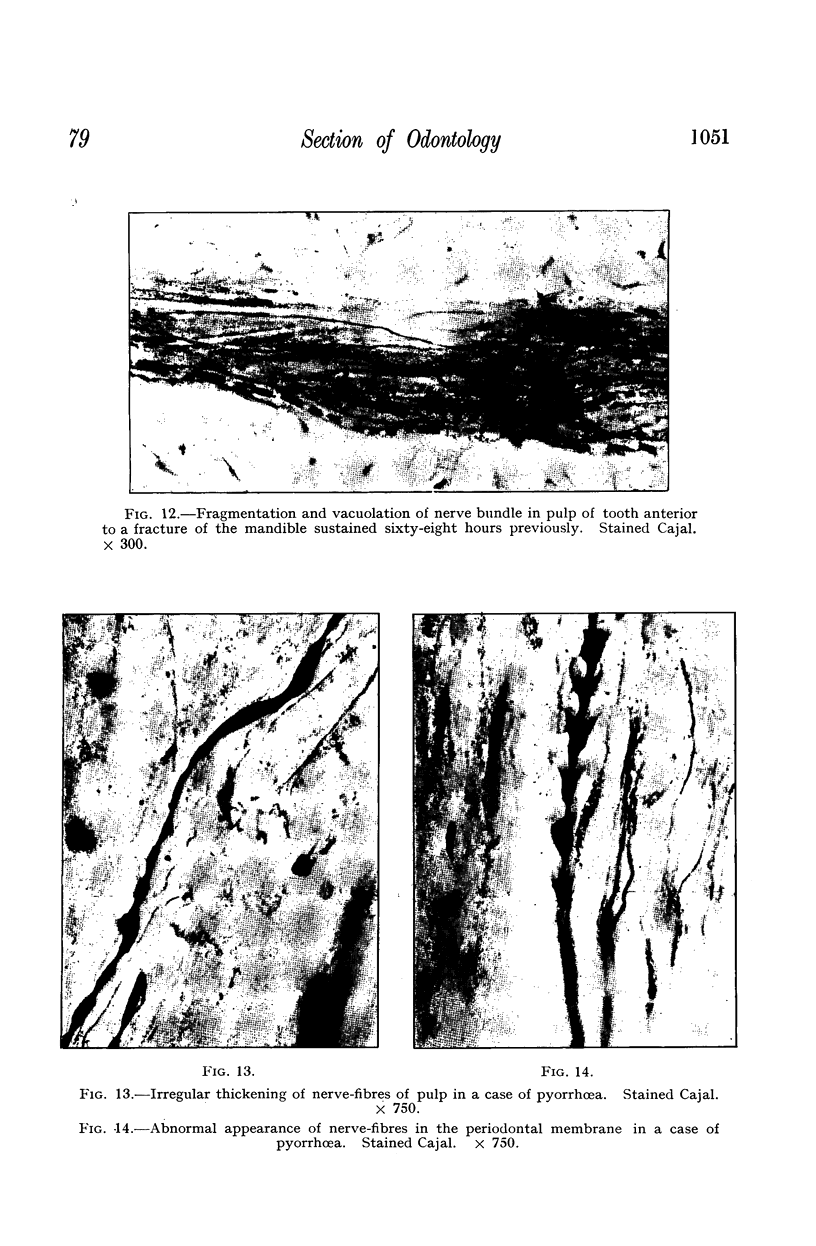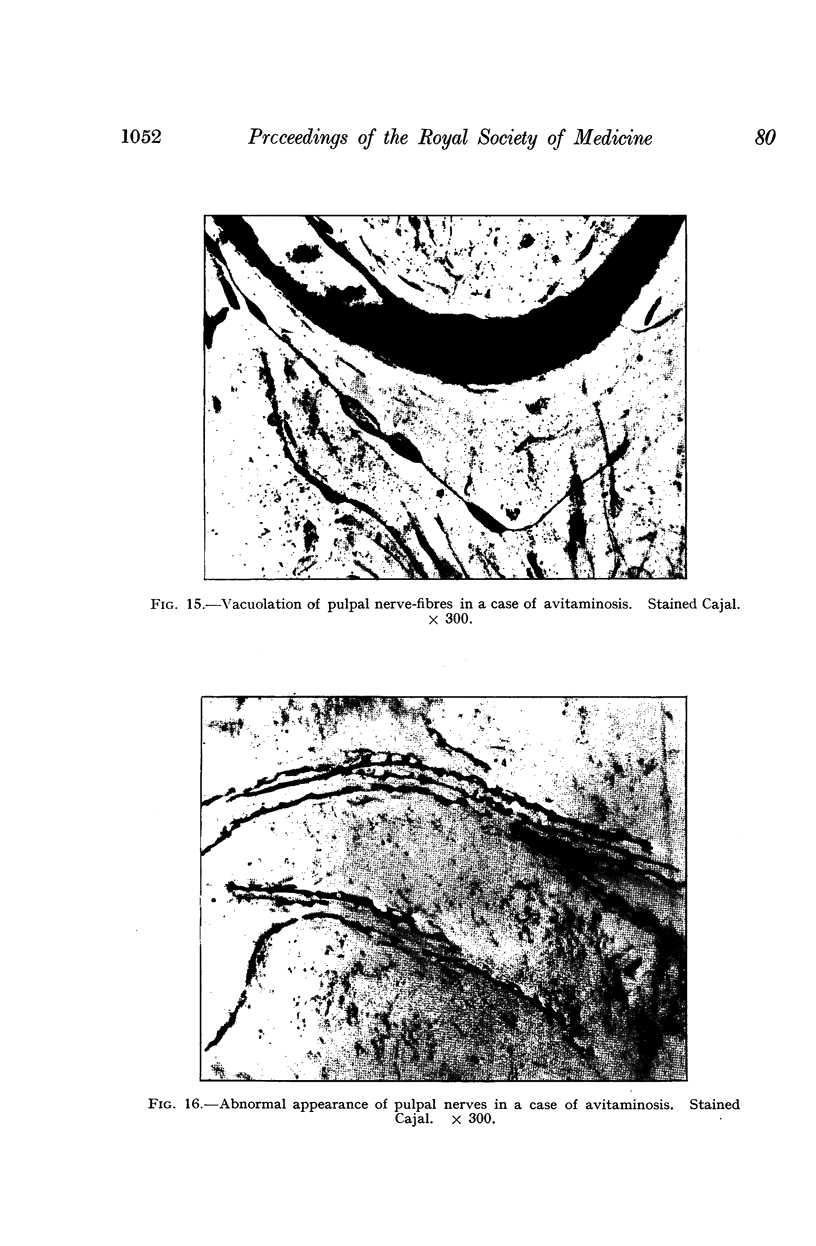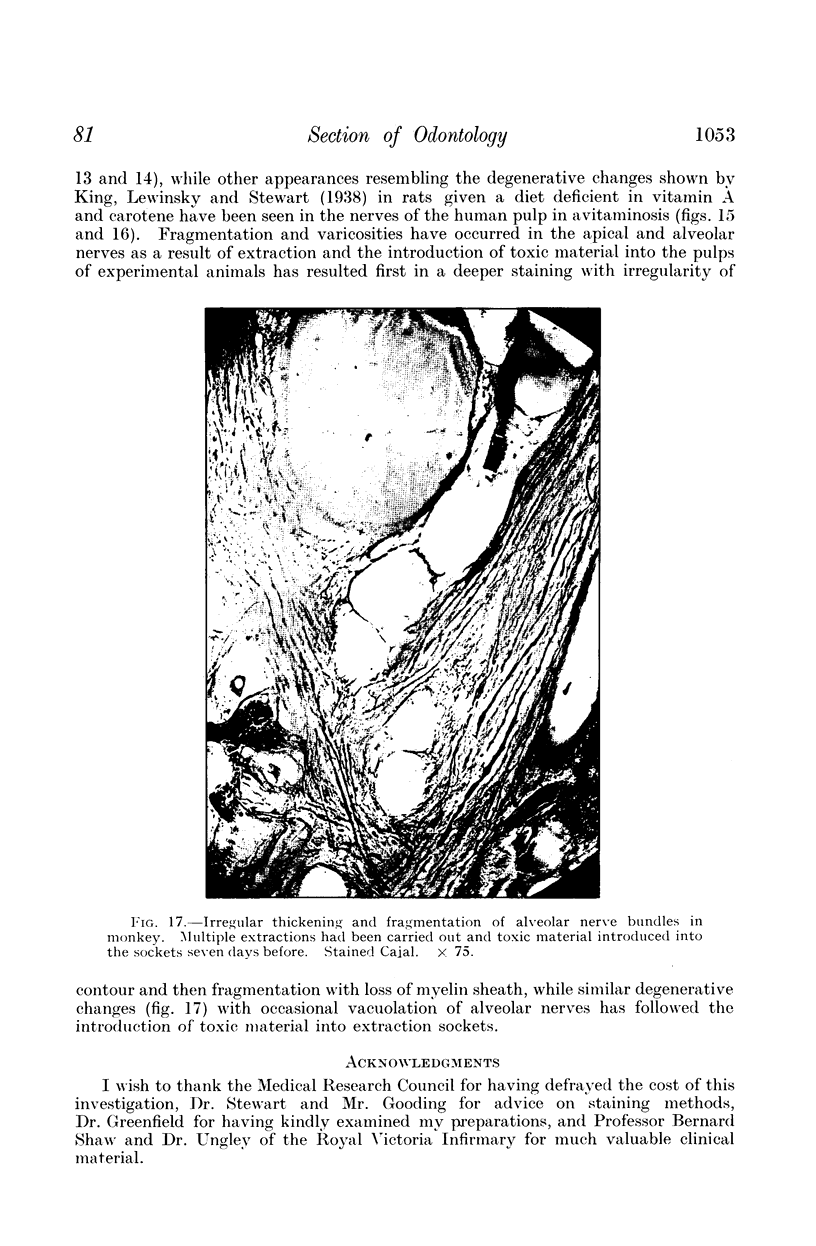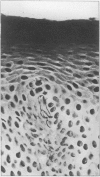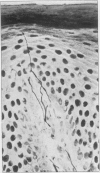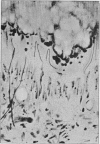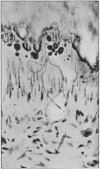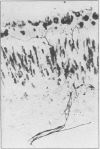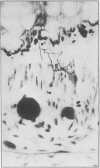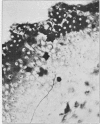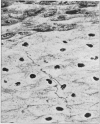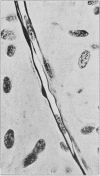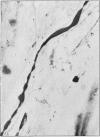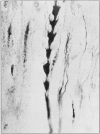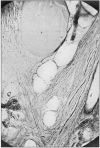Abstract
The presence of a perivascular neural plexus in the periodontal membrane suggests that the dental structures have both sensory and autonomic nerve supply. The fibres described by Mummery are unaffected by section of the inferior dental nerve although there is marked degeneration in all demonstrable nerves. Nerve-fibres have been observed describing simple and complex looping in the odontogenetic zone and others which, running tangentially between the odontoblast layer and the dentine, form a very definite nerve plexus. Attached to these nerve-fibres are numerous round or pear-shaped bodies which may be either nerve-cells or end-organs. Definite nerve-fibres have been traced into the dentine. The convoluted forms described by growing nerve-fibres approaching transplanted teeth did not resemble the nerve-loops previously reported in the periodontal membrane of monkey and man. Plexiform nerve-fibres have been seen in the gum of the cat and varicose nerve-fibres in the gum of the sheep. In man, intra-epithelial fibres have been observed which pass from the intra-papillary neural coils to terminate near the surface of the epithelium in knob-like endings. No abnormality of innervation has been found in supernumerary teeth and teeth from cleft palates, dentigerous and ovarian cysts, and in the pulps of denticles from compound odontomes. Since there is no difference in the innervation of heterogenous and autogenous tooth-germ transplants, whether of normal or abnormal form, it would seem that abnormalities of form are not due to abnormal innervation. The development and degeneration of the peripheral nerves and the changes produced in the dental innervation by local and general disease in man and experimental animals are described and discussed.
Full text
PDF